Biological Control
Biological control is the deliberate use of introduced and native natural enemies -predators, parasites, pathogens and competitors to suppress and maintain populations of a target pest species (arthropod, weed, plant pathogen or other pest organism).
The common strategies for biological can be described as:
- Conservation biological control
- Classical biological control
- Augmentative biological control
Conservation biological control consists of practices that encourage the presence, reproduction, survival and effectiveness of existing natural enemies of pests.
Classical biological control involves the introduction of a pest's natural enemies to a new location where they do not naturally occur. Oklahoma State has been involved in several biological control programs for invasive weeds:
- Biological control of musk thistle using the weevils, Rhynocyllus conicus (figure
1) and Trichosirocalus horridus (figure 2).
Figure 1. Rhynocyllus conicus.
Figure 2. Trichosirocalus horridus. - Biological control of saltcedar (Tamarix spp.) using the larger salt cedar beetle,
Diorhabda carinata(figure 3).
Figure 3. Diorhabda carinata. - Biological control of field bindweed, Convolvulus arvensis, using the eriophyid mite,
Aceria malherbae (figure 4).
Figure 4. Aceria malherbae.
In addition, Oklahoma State has been involved in releasing Pseudacteon curvatus (figure 5), the decapitating fly of the red imported fire ant Solenopsis invicta.
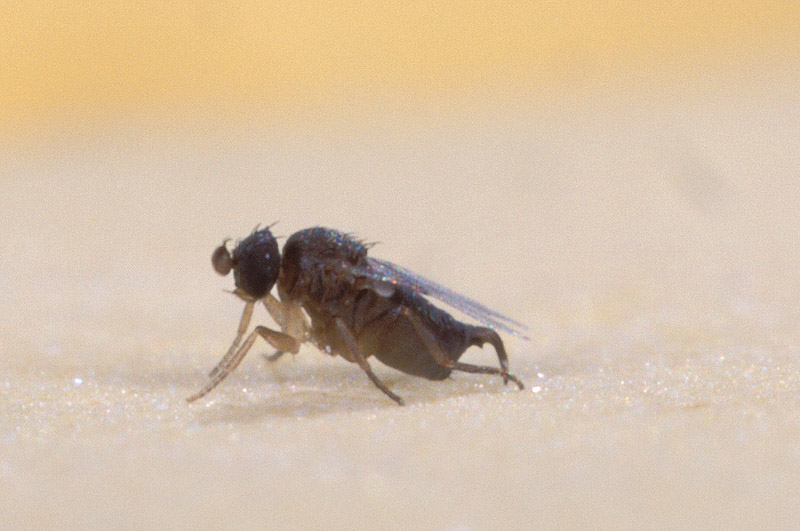
Augmentative biological control involves the supplemental release of natural enemies to increase their numbers and effectiveness against a pest. A current project being conducted at Oklahoma State University that utilizes augmentative biological control is the use of banker plants to control greenhouse pests. Banker plants are a set of plants set up as a rearing / release system consisting of three basic elements:
- The banker plant.
- Alternative prey or other food to sustain natural enemies.
- The natural enemies themselves.

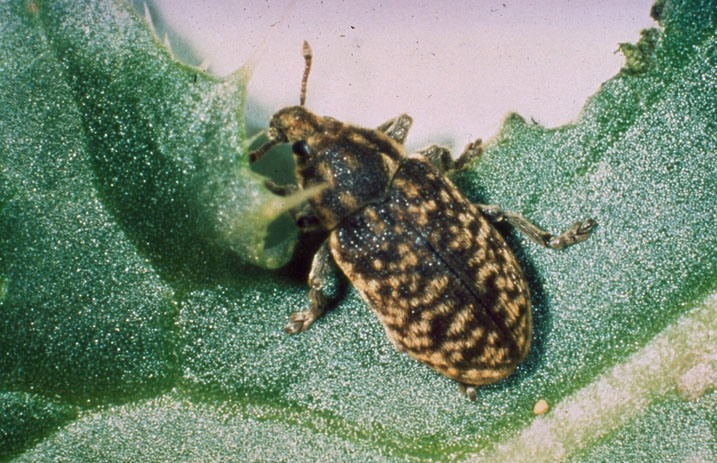
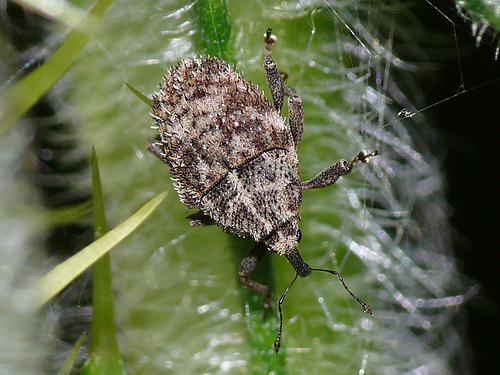
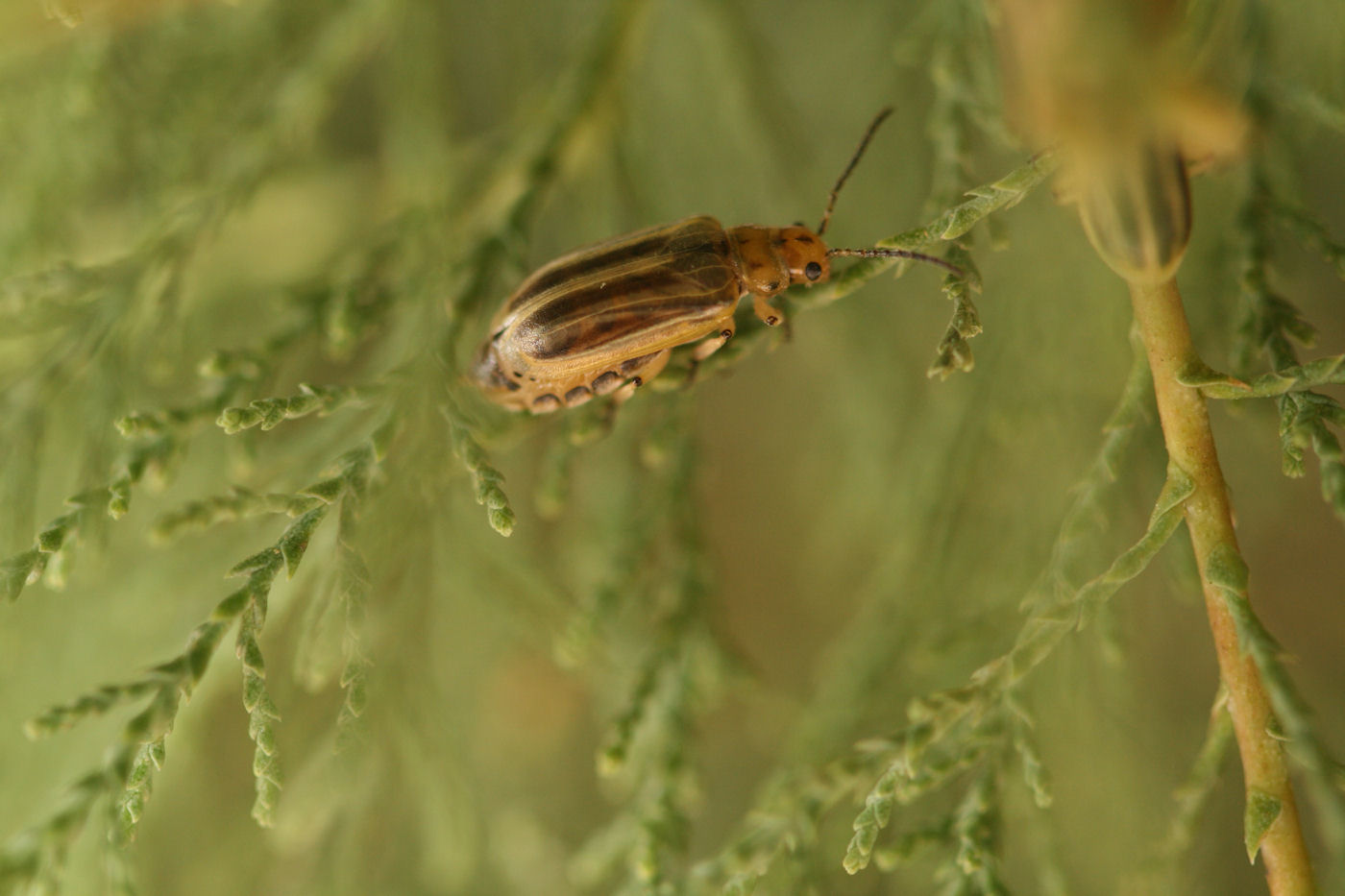
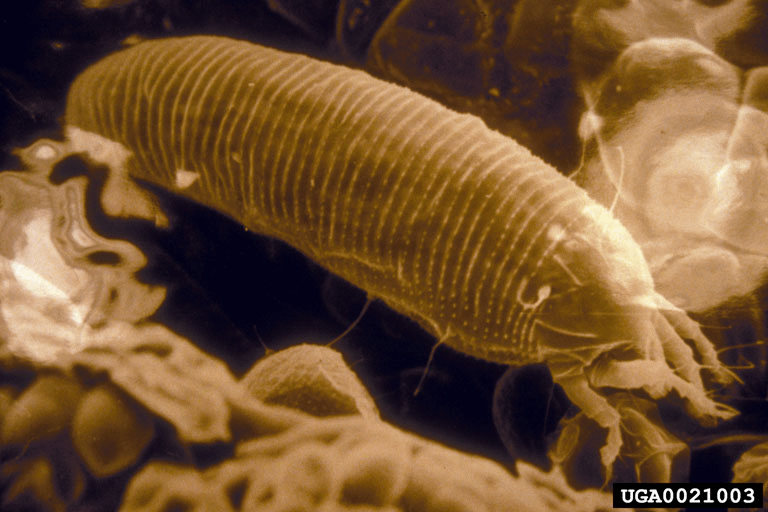 Figure 4. Aceria malherbae.
Figure 4. Aceria malherbae.